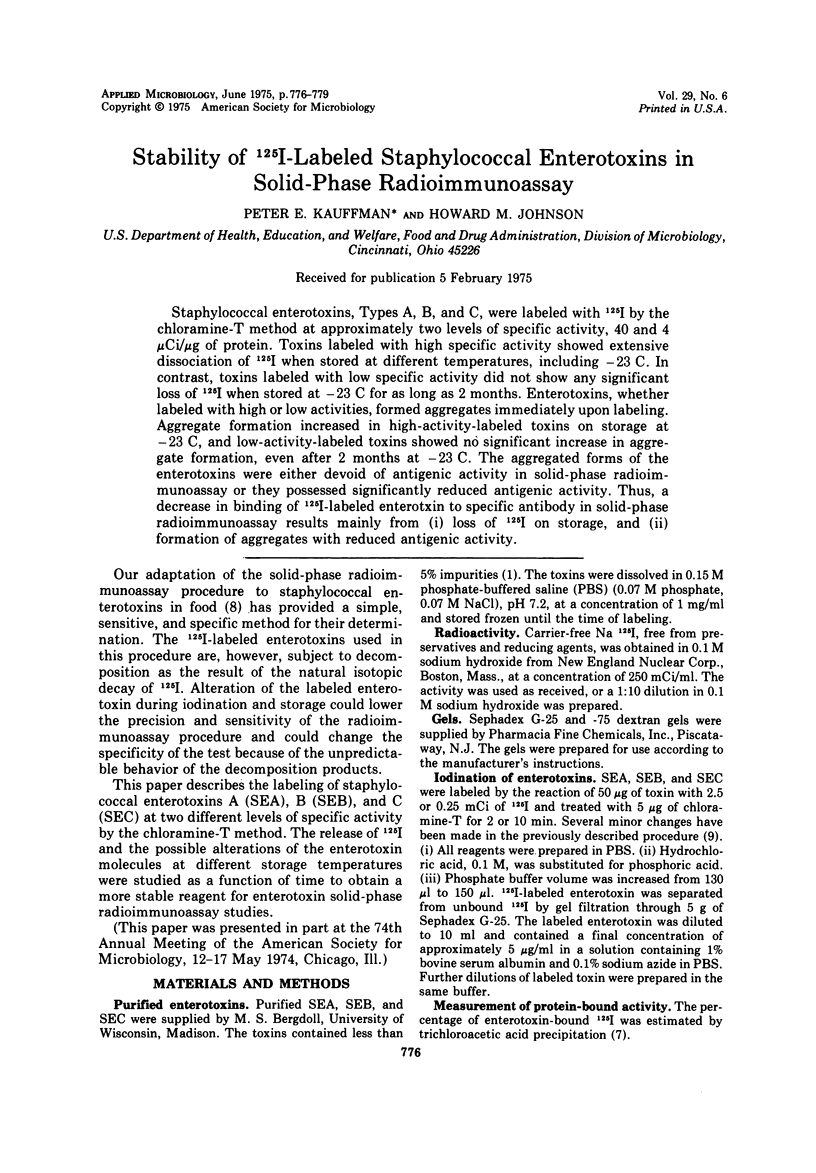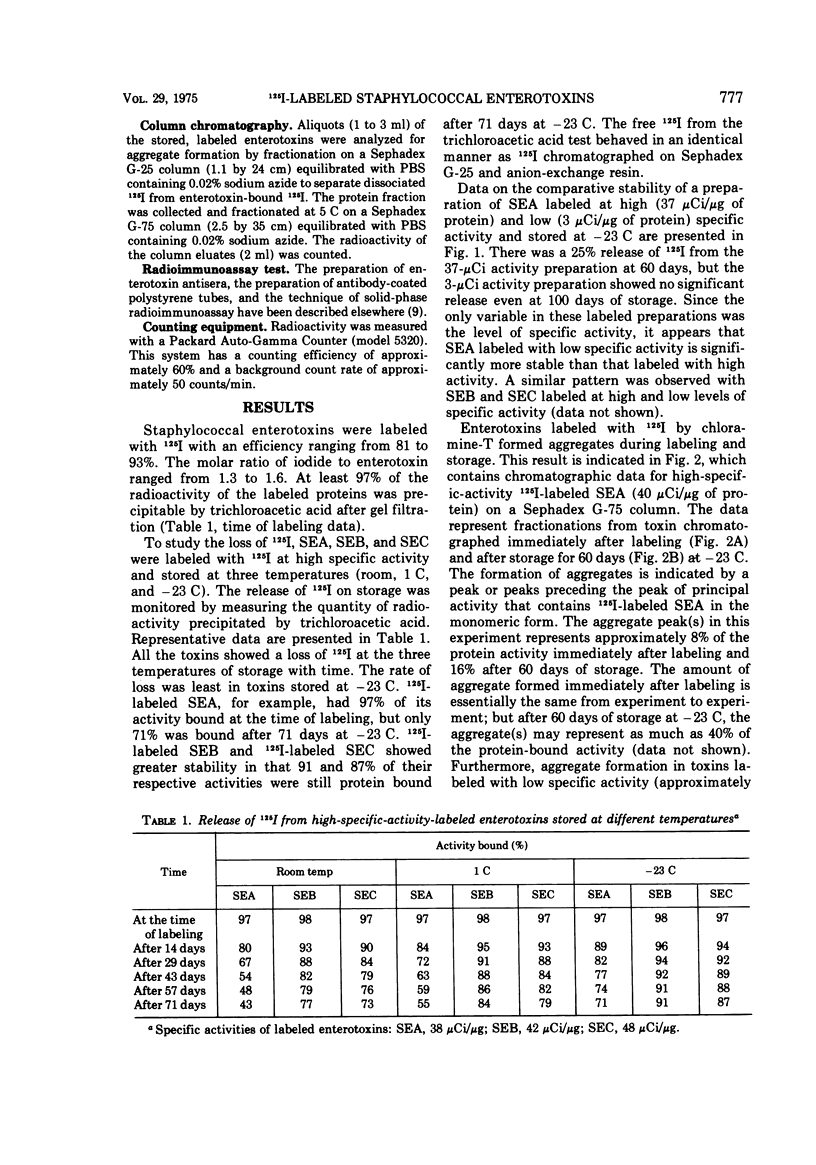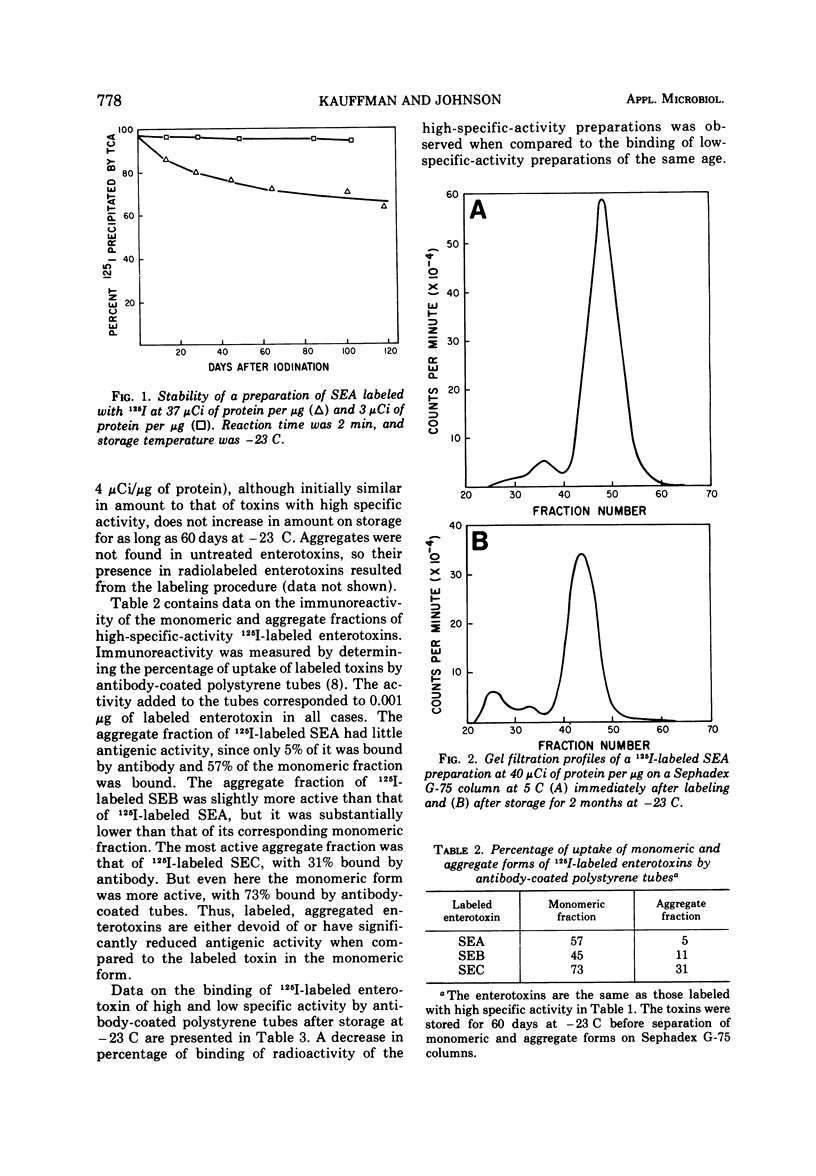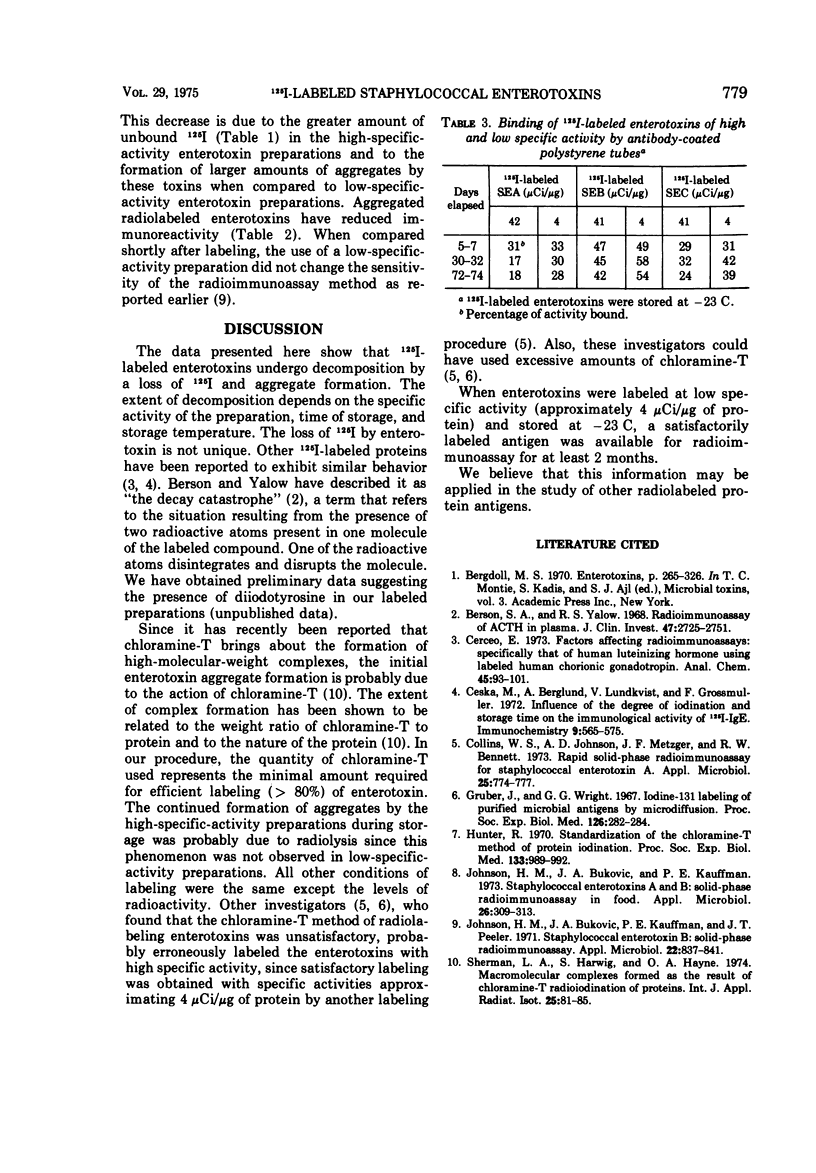Abstract
Staphylococcal enterotoxins, Types A, B, and C, were labeled with 125I by the chloramine-T method at approximately two levels of specific activity, 40 and 4 μCi/μg of protein. Toxins labeled with high specific activity showed extensive dissociation of 125I when stored at different temperatures, including -23 C. In contrast, toxins labeled with low specific activity did not show any significant loss of 125I when stored at -23 C for as long as 2 months. Enterotoxins, whether labeled with high or low activities, formed aggregates immediately upon labeling. Aggregate formation increased in high-activity-labeled toxins on storage at -23 C, and low-activity-labeled toxins showed no significant increase in aggregate formation, even after 2 months at -23 C. The aggregated forms of the enterotoxins were either devoid of antigenic activity in solid-phase radioimmunoassay or they possessed significantly reduced antigenic activity. Thus, a decrease in binding of 125I-labeled enterotxin to specific antibody in solid-phase radioimmunoassay results mainly from (i) loss of 125I on storage, and (ii) formation of aggregates with reduced antigenic activity.
Full text
PDF



Selected References
These references are in PubMed. This may not be the complete list of references from this article.
- Berson S. A., Yalow R. S. Radioimmunoassay of ACTH in plasma. J Clin Invest. 1968 Dec;47(12):2725–2751. doi: 10.1172/JCI105955. [DOI] [PMC free article] [PubMed] [Google Scholar]
- Cerceo E. Factors affecting radioimmunoassays: specifically that of human luteinizing hormone using labeled human chorionic gonadotropin. Anal Chem. 1973 Jan;45(1):93–101. doi: 10.1021/ac60323a016. [DOI] [PubMed] [Google Scholar]
- Ceska M., Berglund A., Lundkvist U., Grossmüller F. Influence of the degree of iodination and storage time on the immunological activity of 125 I-IgE. Immunochemistry. 1972 May;9(5):565–575. doi: 10.1016/0019-2791(72)90066-3. [DOI] [PubMed] [Google Scholar]
- Collins W. S., Johnson A. D., Metzger J. F., Bennett R. W. Rapid solid-phase radioimmunoassay for staphylococcal enterotoxin A. Appl Microbiol. 1973 May;25(5):774–777. doi: 10.1128/am.25.5.774-777.1973. [DOI] [PMC free article] [PubMed] [Google Scholar]
- Gruber J., Wright G. G. Iodine-131 labeling of purified microbial antigens by microdiffusion. Proc Soc Exp Biol Med. 1967 Oct;126(1):282–284. doi: 10.3181/00379727-126-32425. [DOI] [PubMed] [Google Scholar]
- Hunter R. Standardization of the chloramine-T method of protein iodination. Proc Soc Exp Biol Med. 1970 Mar;133(3):989–992. doi: 10.3181/00379727-133-34611. [DOI] [PubMed] [Google Scholar]
- Johnson H. M., Bukovic J. A., Kauffman P. E., Peeler J. T. Staphylococcal enterotoxin B: solid-phase radioimmunoassay. Appl Microbiol. 1971 Nov;22(5):837–841. doi: 10.1128/am.22.5.837-841.1971. [DOI] [PMC free article] [PubMed] [Google Scholar]
- Johnson H. M., Bukovic J. A., Kauffmann P. E. Staphylococcal enterotoxins A and B: solid-phase radioimmunoassay in food. Appl Microbiol. 1973 Sep;26(3):309–313. doi: 10.1128/am.26.3.309-313.1973. [DOI] [PMC free article] [PubMed] [Google Scholar]
- Sherman L. A., Harwig S., Hayne O. A. Macromolecular complexes formed as the result of chloramine-T radioiodination of proteins. Int J Appl Radiat Isot. 1974 Feb;25(2):81–85. doi: 10.1016/0020-708x(74)90103-3. [DOI] [PubMed] [Google Scholar]


